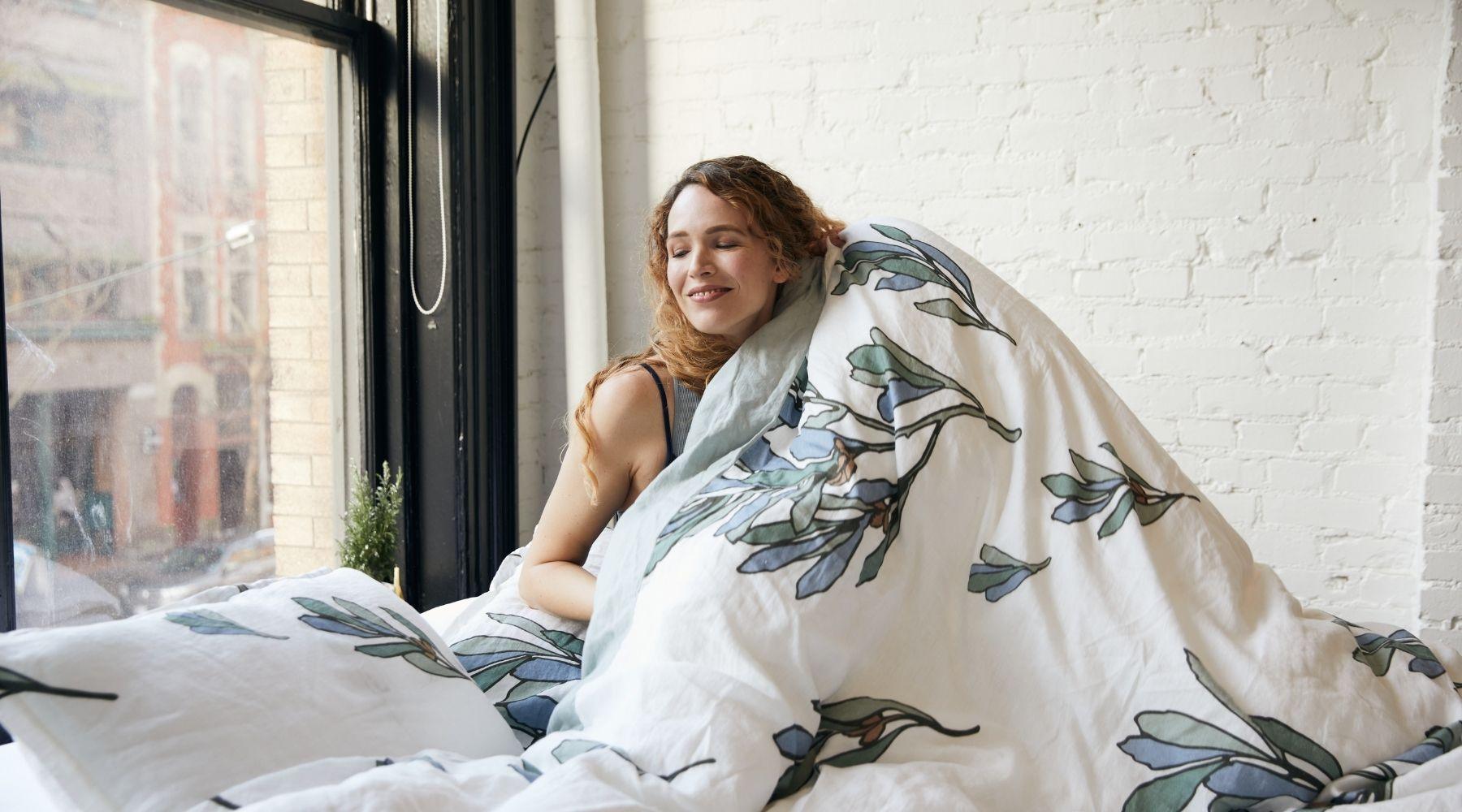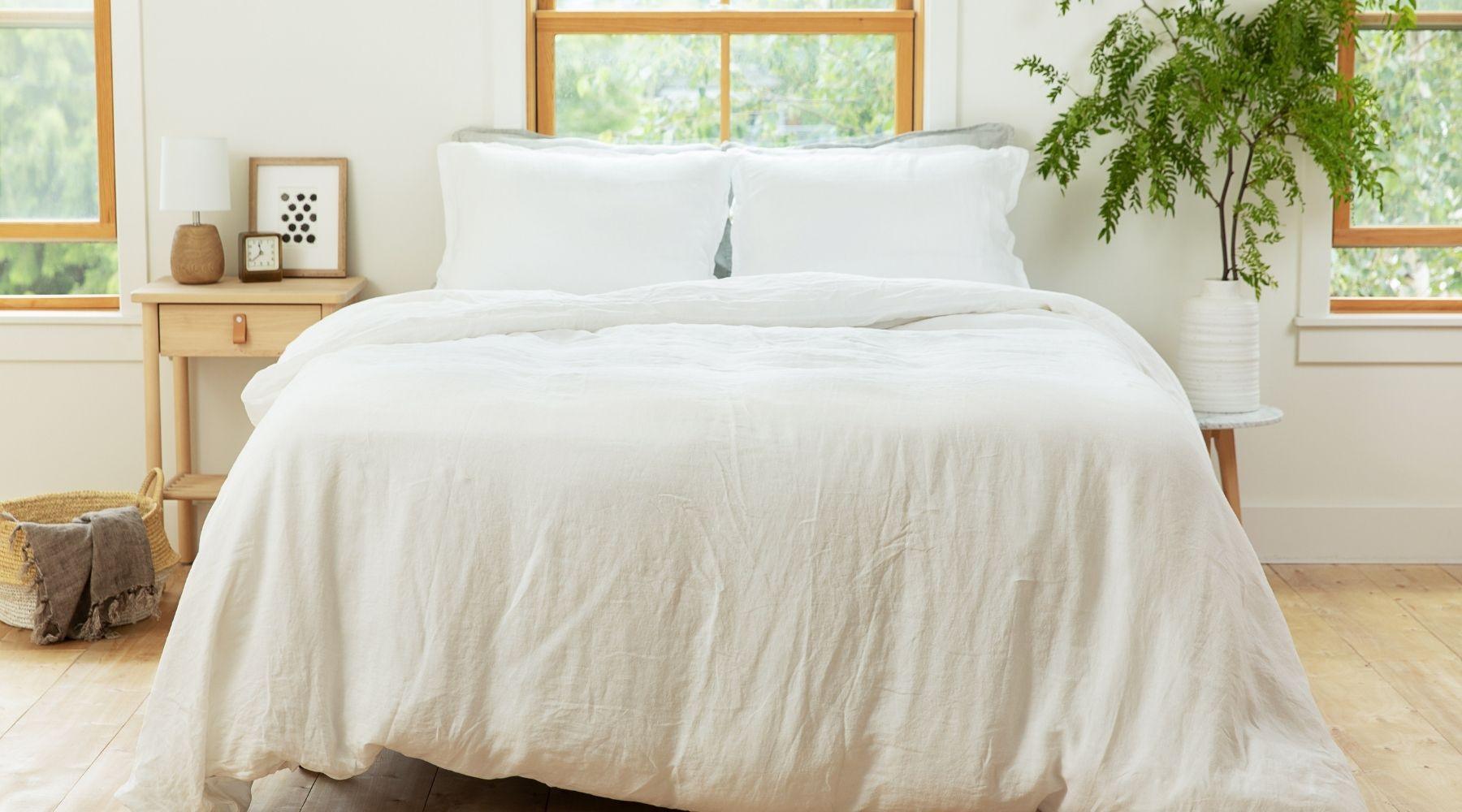
Is Linen Scratchy?
If you’ve ever dismissed linen bedding because you assumed it would feel coarse or stiff, you’re not alone. While linen has long been prized for its strength and sustainability, its texture is often misunderstood.
Most of us are familiar with the benefits of organic flax linen: it’s thermoregulating, durable, and sustainable. But soft? Here is where misconceptions still exist—many people think of linen as being rough and scratchy. In fact, quality organic linen is soft right out of the box—and continues to get softer over time.
In this article, we’ll explain what makes some linen feel softer than others, how different manufacturing methods affect texture, and what to look for when buying linen bedding online.
The Science Behind Linen’s Unique Texture
Linen is a bast fiber, meaning it comes from the inner stalk of the flax plant. Bast fibers are naturally tough and made up of many tightly packed cells, unlike the soft, single-celled structure of cotton. This strength is why lower-grade flax fibers are often used to make durable items like rugs and ropes.
But not all linen is created equal. At The Modern Dane, we use only fine, long-staple flax fibers—never the coarse grades used for industrial products. Our linen yarn is also spun in water heated to 60°C (140°F), a process that softens the fibers and smooths the thread, resulting in a fabric that feels luxuriously soft from the start.

How Linen Is Softened—and Why It Matters
There are various options available to linen manufacturers to make their sheets softer. Some use chemical softeners that wash off after a while, misleading the customer by masking coarse, poor quality sheets. Other brands use chemical pre-wash techniques to soften their sheets and prevent shrinking and fading.
At The Modern Dane, we use enzymes to garment-wash our linen duvet covers before they get to you, so they’ll be soft on first use. Washing helps break down pectin—a naturally occurring substance in linen that binds the fibers together—and using enzymes, which are biodegradable, is best for the environment.
If you’re buying linen online, check reviews written by customers and professionals. Our European linen duvet covers is declared among the "best duvet covers" by the experts at NBC. We’ve also garnered hundreds of five-star reviews from our customers, who love the out-of-the-box softness of our Scandinavian linen duvet covers. If you’re still unsure, order a set of fabric swatches and feel for yourself.
"The Duvet cover is just wonderful. It is very beautiful but it is also incredibly soft and cuddly. I have never had linen bedding before and I just love it. The customer service from the company was also excellent. I highly recommend!"
- Connie H.
What About Thread Count?
One metric you should never use to judge linen quality is thread count. While thread count is often used as a selling point for cotton bedding, it’s largely irrelevant—and even misleading—when it comes to linen. That’s because linen fibers are naturally thicker and more textured than cotton, so a lower thread count actually allows for better breathability and comfort. Trying to pack more linen threads into a square inch can make the fabric unnecessarily heavy, stiff, and less breathable. Ironically, a high thread count in linen can trap heat and moisture, making you feel hotter at night.
Instead of thread count, focus on the quality of the flax fibers and the finishing techniques used. Long-staple European flax and gentle garment-washing, like we use at The Modern Dane, result in a linen fabric that’s both durable and exceptionally soft—without relying on artificial softeners or inflated numbers.
Linen Gets Softer Over Time
Unlike cotton, linen gets softer and softer with every wash, as the pectin that binds the fibers gently breaks down. Water alone will achieve this—there’s no need for fancy fabric softeners. In fact, softeners may coat linen strands in a residue that affects their porousness.
With proper care, your organic linen duvet covers will last for years. In parts of Europe, it’s traditional to pass linen sheets down through generations. This vintage linen has a softness that’s impossible to replicate mechanically, just as you can’t hurry the aging process of a fine wine or whiskey. So, take good care of your linens—and they’ll take care of you.
Have we convinced you to switch to linen? Naturally hypoallergenic and antibacterial, our Scandinavian-style duvet covers are a great choice for sensitive skin. And our covers are GOTS- and OEKO-TEX®- certified, meaning that they’re organic and free from harmful chemicals. Check out the full range of our Danish-style bedding here.
What do you sleep in? Share your sleeping routine with us on Instagram, Pinterest, Facebook or Twitter—we’d love to hear from you!







Leave a comment
This site is protected by hCaptcha and the hCaptcha Privacy Policy and Terms of Service apply.